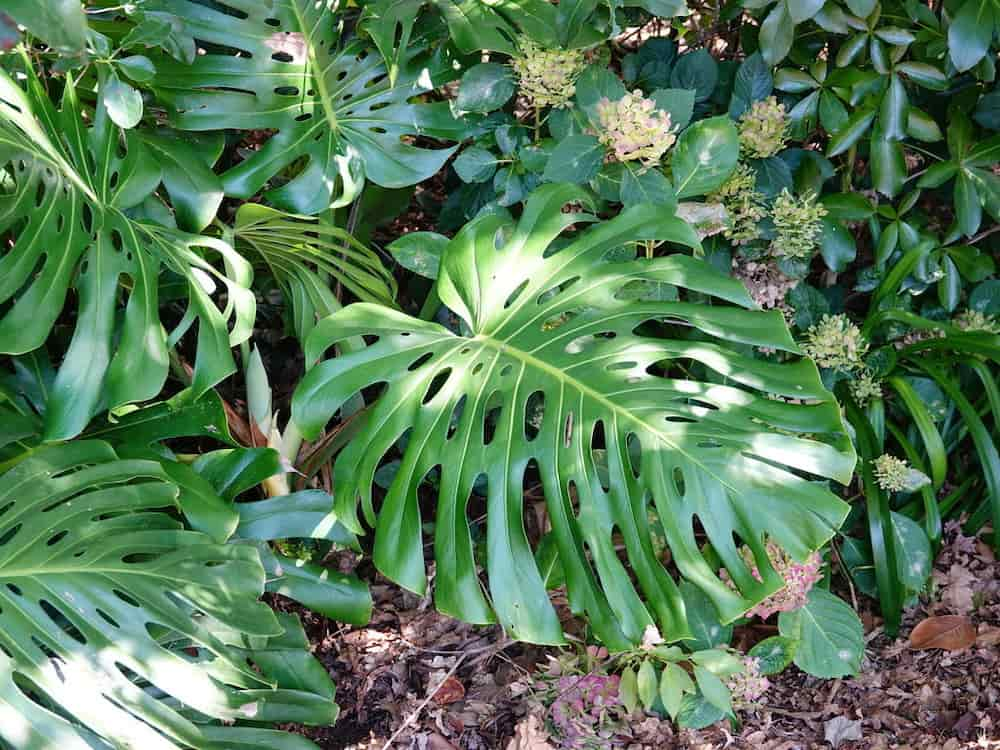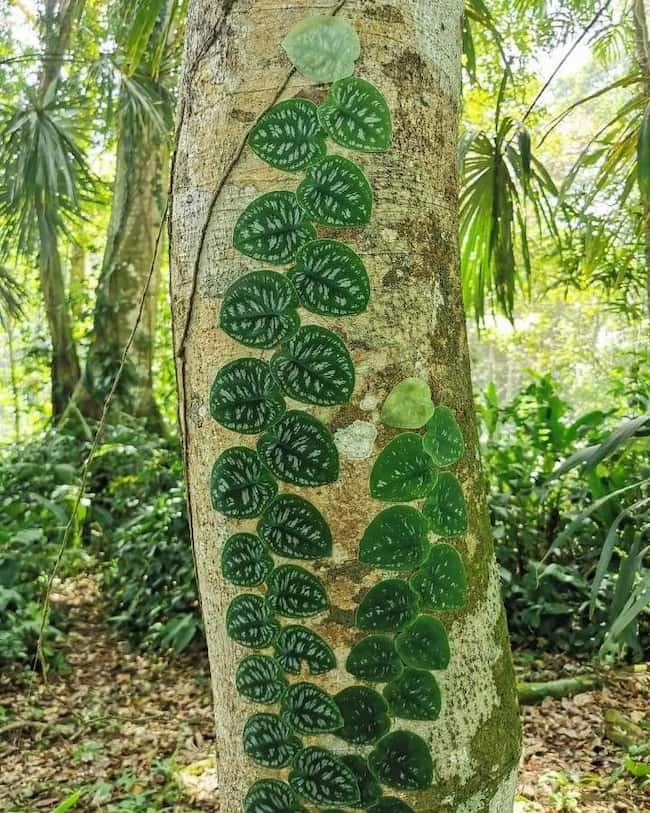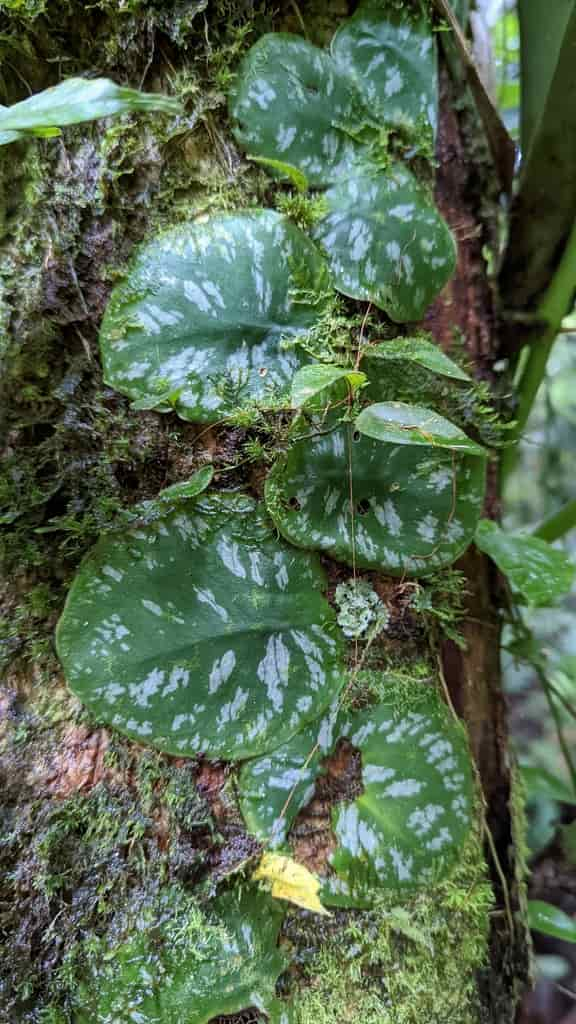If you’ve been admiring Monstera plants in your local nursery, you’re not alone. These lush, tropical plants are gaining popularity for their big, bold leaves.
But what many people don’t know is that there is more than one type of Monstera plant – and how you see Monstera in the wild is very different from how they often appear at your local plant shop! Understanding a bit about the Monstera plant in its natural environment can help plant owners to better care for their own Monstera at home.
In this article, we’ll describe a few different varieties of Monstera and show you where you can find them growing naturally.
So if you’re looking to add a touch of the tropics to your home or garden or find them on your travels, read on!

Table of Contents
Monstera in the wild
Here are nine popular varieties of Monstera that make great houseplants and are also spectacular to witness when found out in the wild. Perhaps one will speak to your plant-loving heart and you’ll be inspired to seek it out the next time you travel!
1. Monstera deliciosa

This is the most popular type of Monstera plant, and it’s easy to see why. The leaves are huge and have a distinctive split-leaf appearance. You’ll usually find them growing on trees or rocky outcrops in the rainforest.
Did you know: While it’s rare for this to happen with Monstera deliciosa grown at home, in the wild, you can find Monstera deliciosa fruit growing from this type of plant!
2. Monstera Siltepecana

This variety of Monstera is native to Mexico and has much smaller leaves. Monstera Siltepecana’s leaves are a deep green color with silver-gray markings. This epiphytic vine usually grows on other plants or trees.
3. Monstera adansonii

This variety is a common house plant and is also one of the Monstera in the wild that thrives. When Monstera adansonii is growing in nature, it can reach a towering 20 feet long. This plant looks very similar to the Monstera deliciosa, but it has smaller leaves.
4. Monstera lechleriana

This is a rarer variety of the Monstera plant and is a popular house plant, but it looks the most spectacular in the wild. The leaves of Monstera lechleriana are a bright green and have large notable fenestrations, which are holes that appear in the leaves.
Want your own Monstera at home to grow like it’s living in the jungle? Take a look at our article to see if growing your Monstera outside is an option for you!
5. Monstera dubia

Monstera dubia is also known as the shingle Monstera and is a scrambling vine. This variegated Monstera has deep green heart-shaped leaves with silver markings and forest green veins. This smaller variety grows to a maximum of 3 to 6 feet.
6. Monstera obliqua

This extremely rare version of the Monstera features amazingly large leaves with big fenestration holes. These oversized holes give the plant a delicate and sculpted look. But in the wild, the Monstera obliqua plant is anything but delicate.
It can grow up to 10 feet tall and can endure tropical storms and hurricanes.
7. Monstera esqueleto

When Monstera esqueleto is in the wild in its native Mexico and Guatemala, it tends to enjoy milder climates. The leaves are a deep green color with a tear-dropped shape.
These plants can reach tremendous proportions out in the wild and will grow to a maximum of 32 feet. Interestingly, they’re often known by a completely different name referring to the exact same plant: the Monstera Epipremnoides.
8. Monstera tuberculata

In the wild, the Monstera tuberculata wraps its bright flat green leaves tightly around trees. This creates a blanket-like effect that benefits both the plant and the tree.
The tree gets extra protection from the elements, while the plant gets to climb to new heights for sunlight. The leaves grow in an alternating pattern and have deep fenestrations and grow up to 3 inches in diameter.
9. Monstera acacoyaguensis

The Monstera acacoyaguensis is an uncommon houseplant but one of the most impressive Monstera in the wild you’ll find out there. It’s a scrambling vine that can grow up to 30 feet tall.
The leaves are glossy and have a deep green color with large fenestrations, and it looks very similar to Monstera deliciosa leaves with a leathery finish.
Where can I find Monstera in the wild?
Now that you know a little more about some of the different Monstera varieties, you might be wondering where in the world you can find them.
Here are some of the best places to spot these plants in their natural habitat:
- Costa Rica
- Panama
- Mexico
- Guatemala
- Colombia
- Belize
Monstera plants naturally live in tropical climates and are most commonly found in Central and South America. However, you can find them in other parts of the world as well, such as Southeast Asia and Africa.
These environments are great for Monsteras because of the warm temperatures and high humidity levels that Monsteras love. There are also tall trees that create ideal light conditions for the plants by providing bright indirect light.

How do Monstera grow in the wild?
In the wild, Monsteras are climbers and will often wrap their leaves around tree trunks or other plants to climb to new heights. This helps them to get more sunlight and also provides extra support in case of high winds or storms.
Monsteras are also epiphytes, which means that they grow on other plants or trees but don’t harm them. In fact, some believe that the plant actually helps to support the tree and prevent soil erosion. They have special roots that help them to attach themselves to their host plant.
These roots are also very efficient at absorbing water and nutrients from the air, which is why Monstera plants can survive through the drier months. You’ll also sometimes see Monstera with aerial roots in certain species, which are roots that grow down from the stem of the plant and into the ground.
The large holes that can be found in the leaves of some Monstera varieties are called fenestrations. These holes help the plant to reduce its weight, which is important for climbers. It also allows for the leaves to withstand high winds and rainstorms.

How big do Monstera get in the wild?
Monstera plants can range in size from a few inches to over 30 feet, depending on the species. The leaves also vary in size, with some varieties having leaves that are only a few inches wide and others having leaves that are over a foot wide.
On average, wild Monstera plants grow 3 to 4 times larger in nature than they do when grown indoors. This is because of both expanded space and the ideal growing conditions which lead to some truly giant Monstera.
The main factors that affect the size of Monstera in the wild (and similarly in your home) are the amount of sunlight and water that they receive. If a plant is growing in an area with low light levels, it will likely be smaller than a plant that is growing in an area with high light levels.
The same goes for water; if a plant does not have access to enough water, it will be smaller than a plant that has access to plenty of water. These plants love consistent well-drained water during spring and summer.
If the wild environment is depleted of one of these factors, the plant will not be able to reach its full potential size. Additionally, the soil quality and type can also affect the size of Monstera plants in the wild. In areas where deforestation is occurring, the soil is often poor in nutrients, which can lead to smaller plants.
